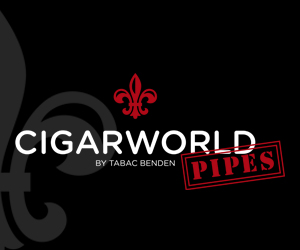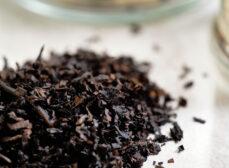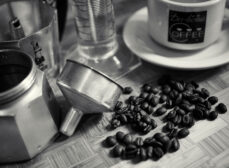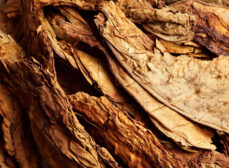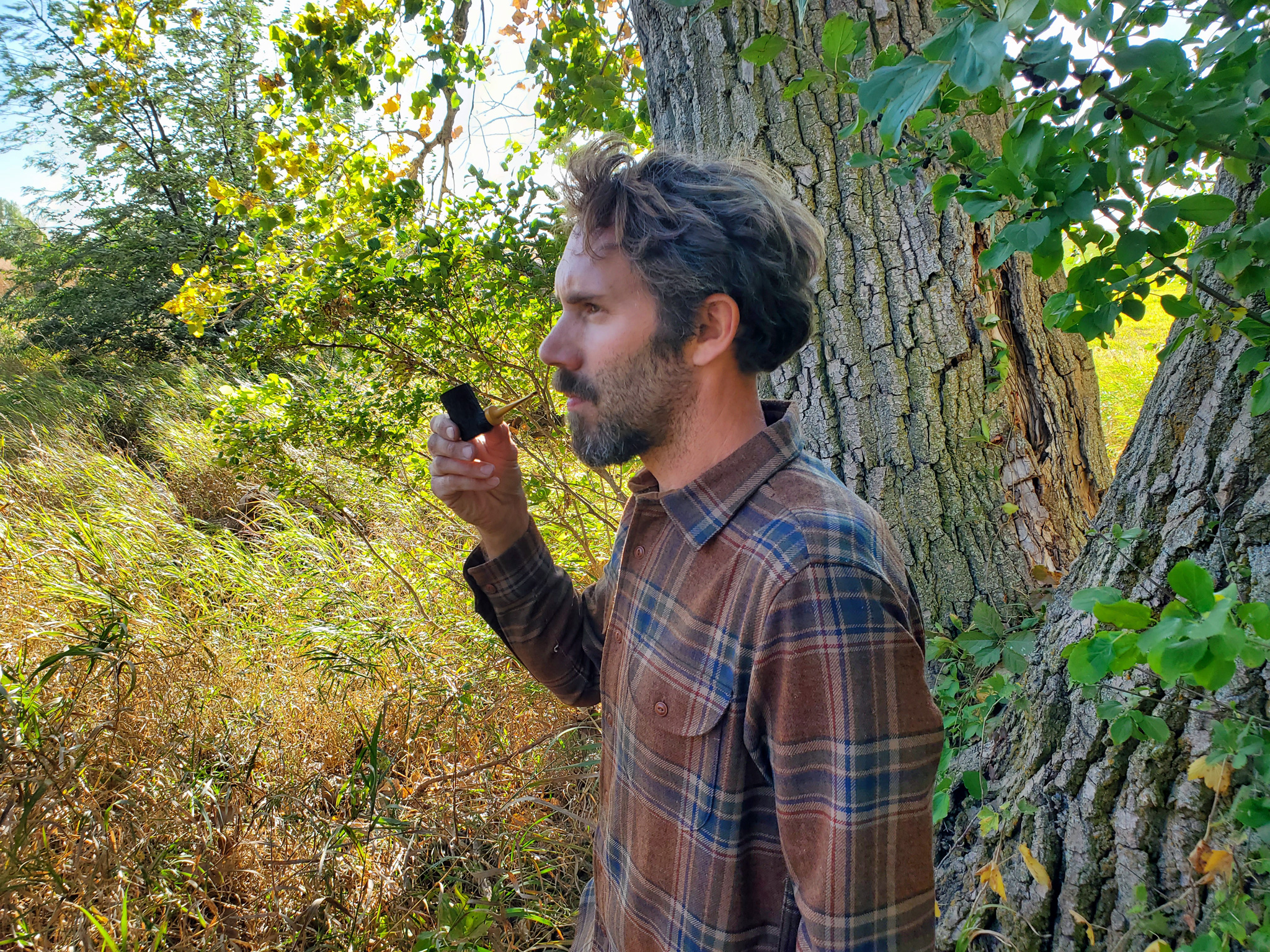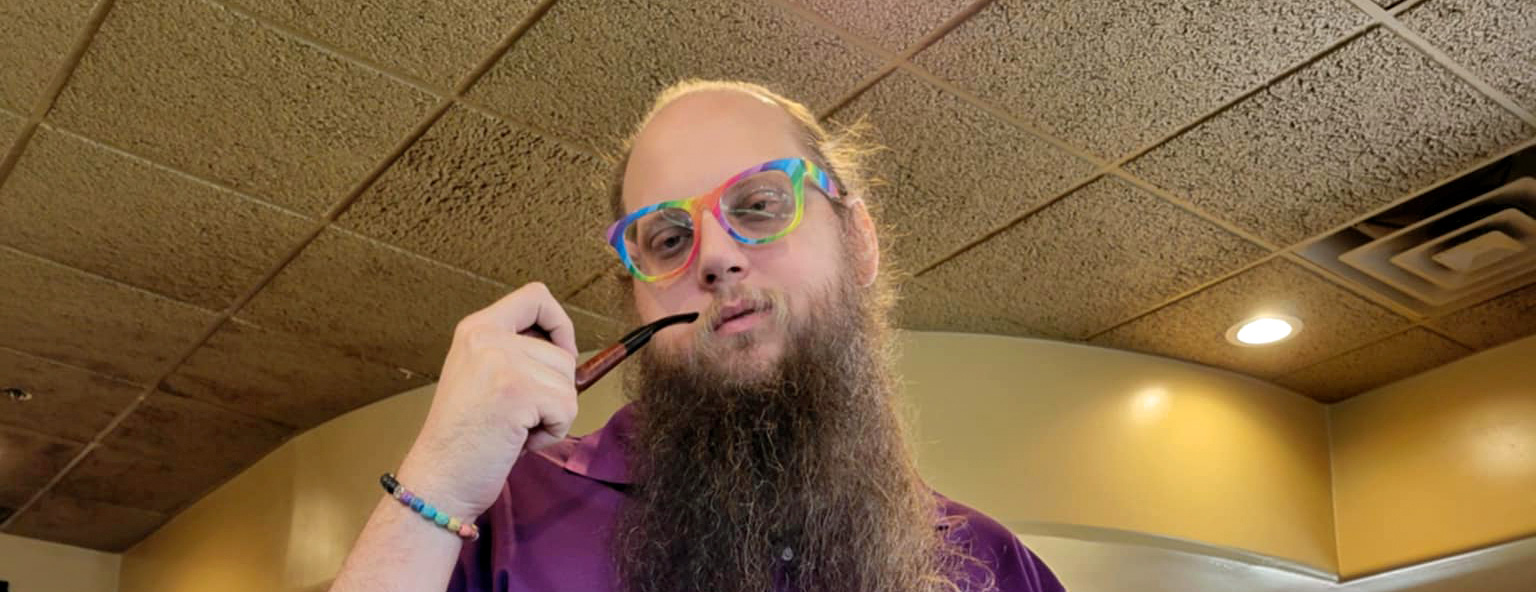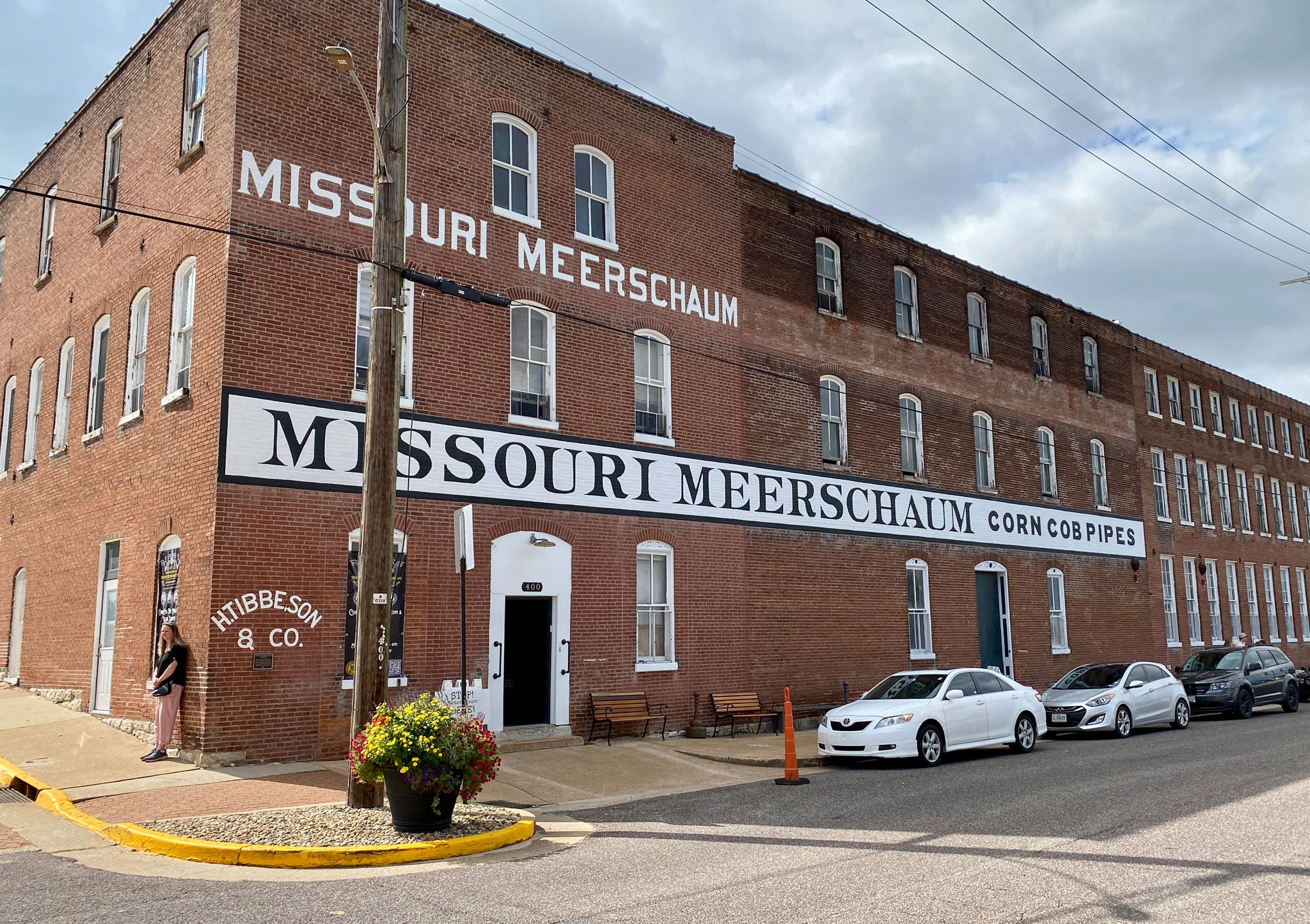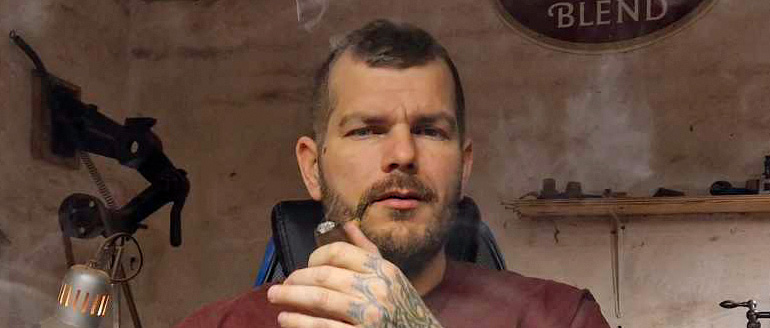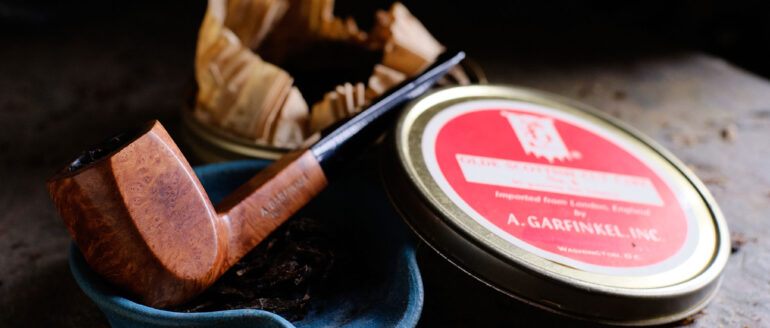
I’ve never owned a four-square billiard. I’ve had plenty of pipes with paneled sides, but this venerable classic has always eluded me. Truth told, I’d always considered it something of a remedial shape, a pipe to be made when a conventional billiard exhibited too many flaws, or when the lines went wrong. And, I considered them too “simple.” For as long as I’ve been smoking pipes, this quaint but cunning shape has held little interest. Then, something conspired to disabuse me of my prejudices all at once.
One day, a few months ago, an Instagram friend taunted me with photos of a beautiful example of the shape that he’d just gotten. I was instantly smitten. Then he showed another. And another. As I looked at his photos, I saw things in the shape I’d never really noticed, sending me down the rabbit hole to look at hundreds of photos of as many examples I could find.
It turns out it’s far from the simple shape I’d thought it to be, but rather one that’s clearly challenging to execute well. While it shares the overall profile and proportions of a conventional billiard, including the slight forward cant of the bowl, those panels have to be even, perfectly square, and, importantly, must not destroy the balance of the shape. If the bowl doesn’t have that very slight forward tilt, it looks like it’s falling backwards. Too much tilt, and it’s just weird. If the panels are cut too deeply, the walls could become too thin, and at its worst, it makes the thing look like a cube on a stick. The cut and gentle curvature of the four vertices are as important as the panels themselves. The shank, too, must be carefully and consistently square along its length, as must the taper of the stem.
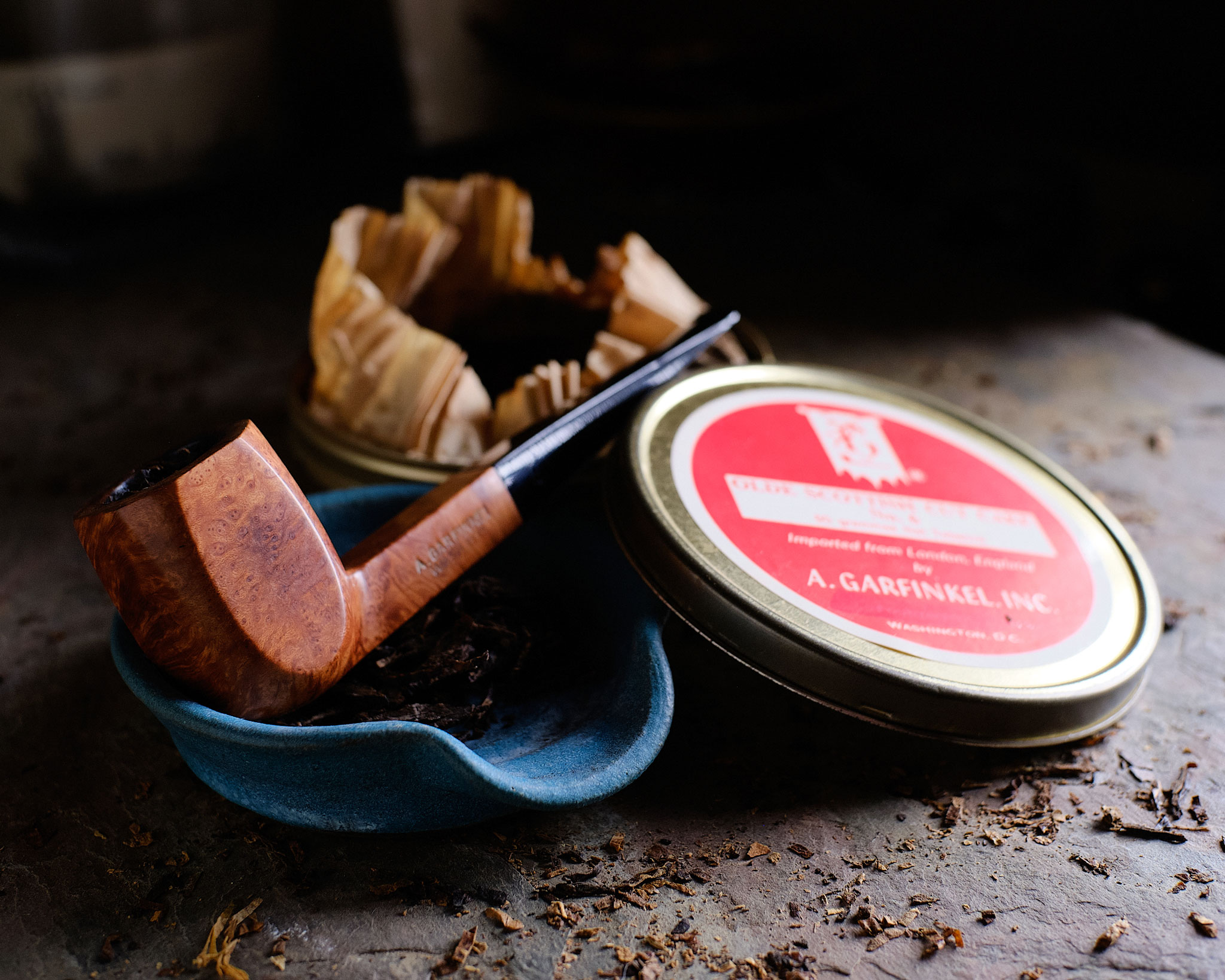
Though based on the classic billiard, it became clear looking at Frank’s pipes, and so many others, that if it’s going to be successfully executed, the pipe maker has to start out with the four-square in mind, rather than using the shape to “fix” a billiard gone wrong. As a bonus, the panels and facets exhibit the briar’s grain in a unique and interesting way.
There’s also the practicality of the shape; the bowl has good capacity coupled with light weight. I had to have one, and so began my quest. A Dunhill EK would be nice, but finding one in good shape that wasn’t more than I was willing to spend turned out to be something of a fool’s errand. I went looking for a more modest example, maybe something French.
After weeks of searching, I came across a “shop pipe” stamped for Garfinkel’s, an old Washington DC tobacconist that has always held deep significance to me.
In the 1980s, a friend in our local pipe community introduced me to Garfinkel’s by way of their magnificent Orient Express #11 mixture. Produced for them by Sobranie, to this day I consider it the finest example of genre ever created. The balance of Virginias, orientals and Latakia were absolute perfection, resulting in a rich, complex and always fascinating tobacco. I started buying a pound of it every month, eight 2oz tins, until the tragic day when Larry Garfinkel called me to ask if he could send me two pounds that month. “Sure, Larry. Why?” It was his last two pounds. It was this tobacco that was the most significant inspiration on my own blending journey. I have no idea what magic was performed to make it so special, but it was, and it is. Garfinkel’s may be gone, but the memories linger.
There were other spectacular blends in the Garfinkel’s catalogue, including a range made my Robert McConnell. The Olde Scottish Cut Cake #6 seen in the photos was another special one. In those days, I wasn’t much interested in Virginias, so I never explored them very deeply, but if I had, I would have squirreled away a lot more of this one, too. This is the last of only a few tins I’ve had over the years. And then there was Shottery, Armon, Ridgeway and Marlowe. I wish I had many tins of all of them. I digress.
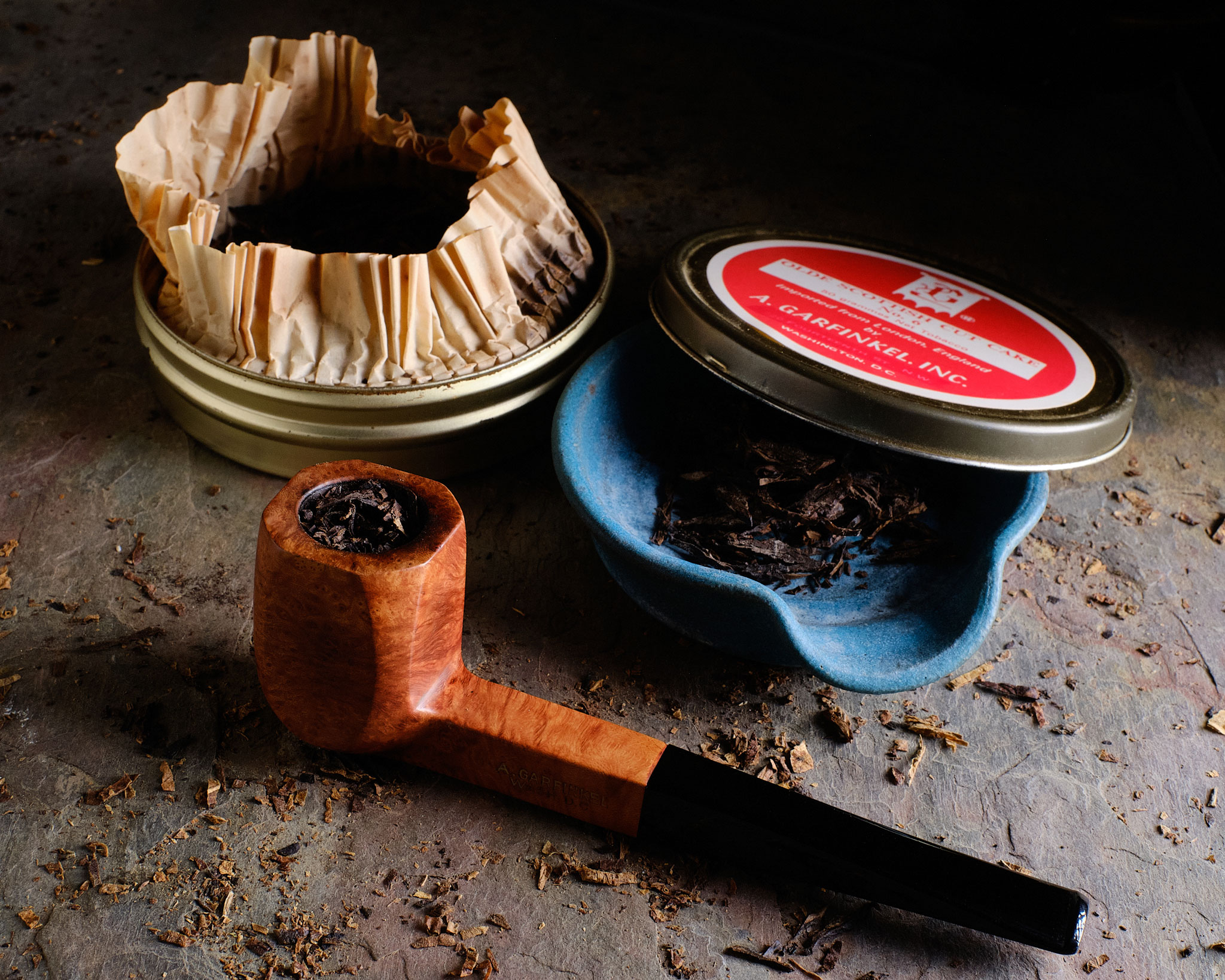
This Garfinkel’s four-square seemed perfect, a bit of serendipity, and it was made in France. I got the pipe for a good price, and waited for its arrival. When the package reached me, I tore into it quickly; my enthusiasm instantly collapsed when I got to the pipe itself. The pipe was covered with flaking and blistered shellac, and wore a bit of road rash from careless handling. The panels, while cut fairly evenly, were not flat, but comically concave. The top was badly scratched, and the stem was crusty, dull, and in need of serious restoration. Perhaps worse was the condition of the airway. Ironically, though the bowl had been reamed almost to bare wood, I don’t think the thing had ever seen a pipe cleaner, and it was tough work just to get a thin one through it. And, it wasn’t just the shank – even the stem was heavily caked with thick, tarry goop. The wretched stench, too, from ages of cheap aromatic tobacco was epic. But, there were no visible fills, the overall size, shape and proportions were good, and under the years of grunge, there might be some pretty nice wood hiding. Time to get to work.
It took a lot of alcohol, and dozens of pipe cleaners to get the airway clean. The drilling through the shank was okay, but it was very tight through the stem, so a little blueprinting was in order, funneling the tenon, smoothing out the transitions, and opening things up to a more consistent cross section.
The shellac had to go. Since the pipe was destined to be completely refinished, I sanded the whole pipe smooth, spending a little extra time on the scratched and chafed top and ensuring that the stem and shank were well mated. Those concave panels were next. Fortunately, they could be sanded flat without losing too much thickness at the top and bottom of the bowl. While working on it, I used photos of a few classic Dunhill EKs as a guide. This is when the challenges presented by the shape reared their heads, forcing me into an uncomfortable intimacy with them. The panels had to be straight, symmetrical, and square. After what seemed like an infinity of incremental refinements, the reshaping was done.
Fine finish sanding, polishing, buffing and waxing were the final steps. Overall, I’m not sure it wouldn’t have been faster and easier to make one rather than restore this one, but I was on a mission, and the Garfinkel’s connection was significant.
The efforts paid off. There’s some very pretty grain on display, and the shape is wonderful. There’s still a bit of road rash, but it looks pretty good for an old pipe, especially considering its previous condition. Best of all, the stamping is still intact, and after a dozen bowls, the haunting spectres of tobaccos past are taking their leave; I think it’s going to be a great pipe.
Not bad for $30 and a couple hours of work. It’s my first four-square, a meaningful addition to my collection, and I’m sure it won’t be my last. I know there are variants with the bowl turned 45˚ to the shank. That would be cool to find. So would a large one, like Dunhill’s ODA shape 836. And there are sandblasts and saddle-stem versions to look for. Thanks a lot, Frank. The last thing I needed was another obsession…
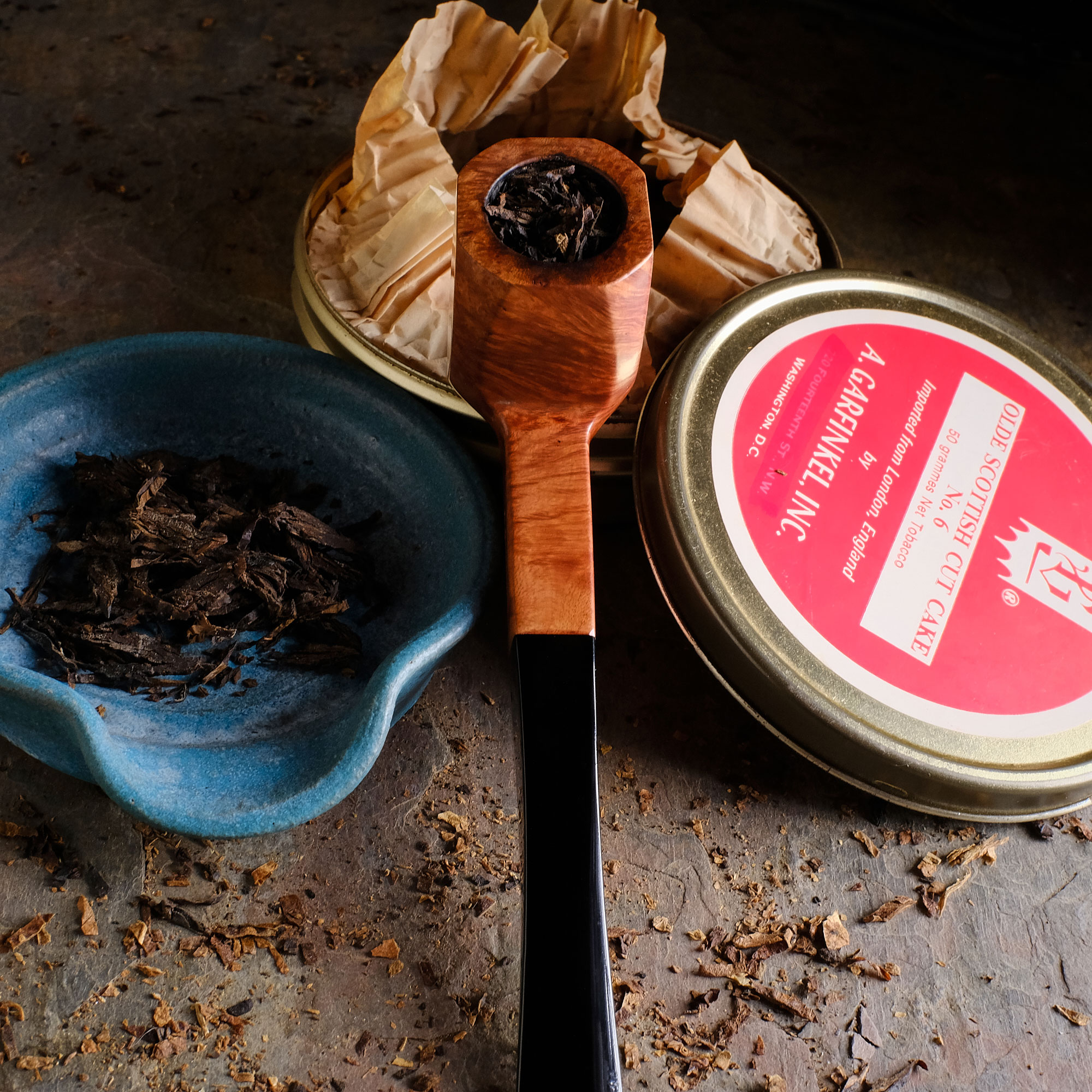
Photos by G.L. Pease – To see more pipe and tobacco photos by G.L. Pease, follow him on Instagram here.


